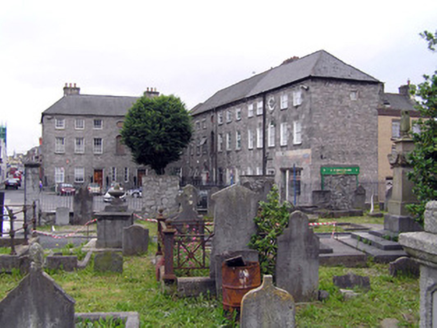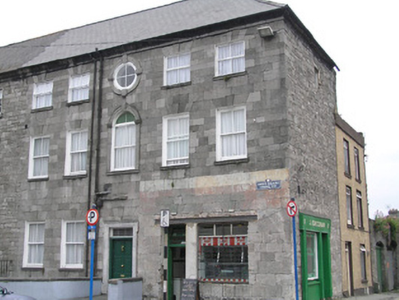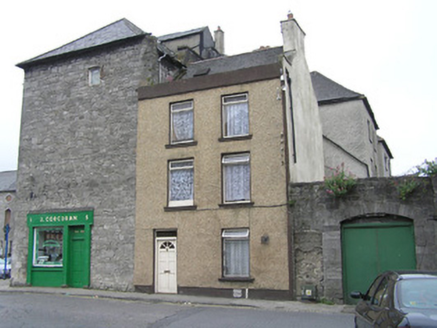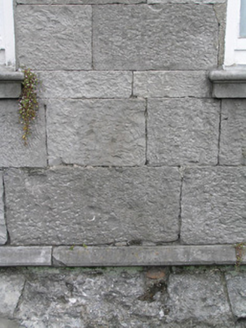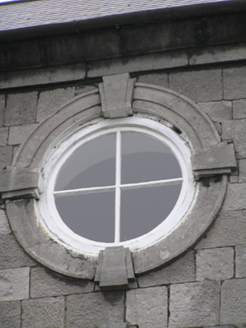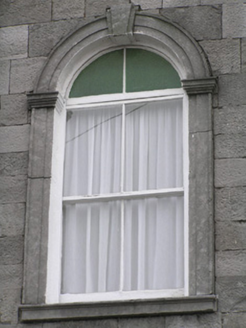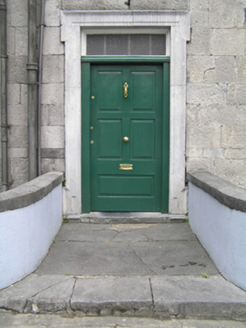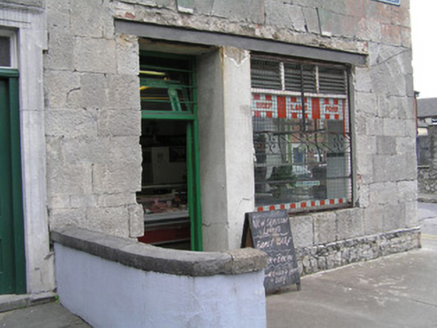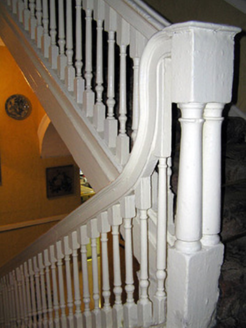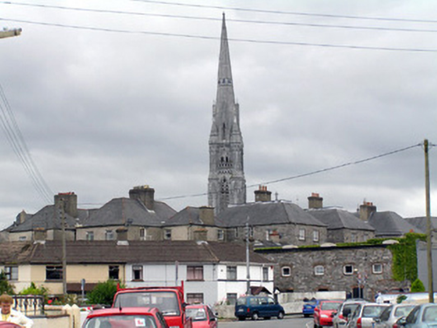Survey Data
Reg No
21513044
Rating
National
Categories of Special Interest
Architectural, Artistic, Historical
Original Use
House
In Use As
House
Date
1750 - 1770
Coordinates
158178, 157035
Date Recorded
17/07/2005
Date Updated
--/--/--
Description
End-of-terrace five-bay three-storey over basement townhouse, built c. 1760, with compositional emphasises given to centrally-placed entrance bay with round-arched opening to first floor and oculus above at second floor level. Built facing south with a shopfront opened to two easternmost bays and to east-facing side elevation, opened c. 1970. Two-bay three-storey rendered house attached to northeast, originally a return to No. 5. Hipped artificial slate roof with ovolo profile eaves cornice supporting cast-iron gutter. Cast-iron downpipes and plumbing provisions. Limestone ashlar faced front elevation. Squared and coursed rubble limestone basement elevation and east-facing side elevation. Roughcast rendered rear elevation. Pebbledash rendered return. Square-headed window openings, limestone voussoirs and keystones, painted reveals, profiled limestone sills, two-over-two timber sash windows, c. 1850, with uPVC windows to second floor level. Hinged four-paned window to oculus. Square-headed door opening with limestone ashlar lugged and kneed architrave, raised and fielded panelled timber door and glazed overlight; arrived at by a bridged limestone flagged front door platform flanked by rendered red brick plinth walls with limestone copings, which returns around the western bays enclosing a basement area. Basement area east of door opening covered over. Shop to easternmost bays opened by the removal of the masonry window pier and limestone sills, and the insertion of a steel joist; voussoirs of windows survive. Timber shopfront to side of no historical value. Interior retaining original dogleg closed string staircase with ramped timber handrail and paired Doric newel posts at half landing level. Interior also retains original skirting to principal room at first floor level, with raised and fielded panelled timber door leaf, lugged and kneed shutter box architrave and raised and fielded panelled window back. Heavy mid eighteenth-century running mould cornice.
Appraisal
John's Square was designed by Francis Bindon. He was born in Clare c. 1698 and died in 1765. His early career was as a painter. The Square is probably the most important classical building scheme of the mid eighteenth-century in Limerick City. Bindon's building activity in Ireland is entirely provincial, as no known buildings of his authorship are known to have been constructed in Dublin. As a result, his work has a continental character without English influence. This house, No. 5, was the last of the John's Square houses to be constructed. As a mid eighteenth-century townhouse, it displays more accomplished and distinguished masonry treatment than the earlier houses on the square. It is almost twice as large as the other houses on the square, giving it added emphasis. The reinstatement of the original fenestration at ground floor level would ehance the architectural merit of this highly significant townhouse.
